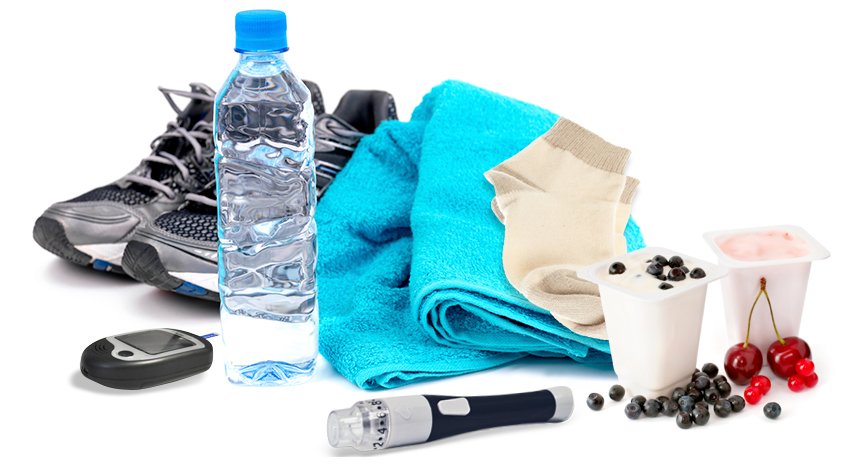Exercise Safely

Always check with your doctor before starting an exercise program. Your doctor may want to perform some preliminary tests. Your doctor can also recommend the type of exercise that is best for you. Check your blood glucose each time before and after you exercise. Checking will help you learn how exercise affects your blood sugar. Be aware that exercise can continue to decrease blood glucose levels up to 12 hours after you complete the activity.
If you have foot problems, make sure you:
• Wear shoes that fit well
• Use insoles for more cushioning
• Wear soft socks
Check your feet before and after exercising. If you do not have feeling in your feet or you have severe foot problems, try; swimming, biking, rowing,
and chair or arm exercises.
If you have severe eye problems make sure to drink lots of water before, during and after exercise, wear medical identification, and stay out of very
cold or very hot weather. Avoid the following exercises:
• Weight lifting
• Jogging
• High impact dance classes
Exercise and Blood Glucose Levels
Exercise lowers blood glucose. If you take insulin or glucose-lowering pills, your blood glucose may decrease during or after exercise. The helpful
chart below serves as a guide to when and how much to snack.
You will need to have either 1 or 2 snacks and it should contain either starch or sugar. One serving size of carbohydrates equals 15 grams.
Here are examples of one snack with the correct portion size to eat (these foods increase your blood glucose rapidly):
• 1 small piece of fruit
• 1 cup of light yogurt
• 2 tablespoons or 1 small box of raisins
• 1 cup of milk
• 3 glucose tablets
• ½ cup of juice
If you are exercising for a long time, you may need to also have some protein. This could be a piece of meat or cheese, two spoons of peanut butter, or a big spoonful of cottage cheese.